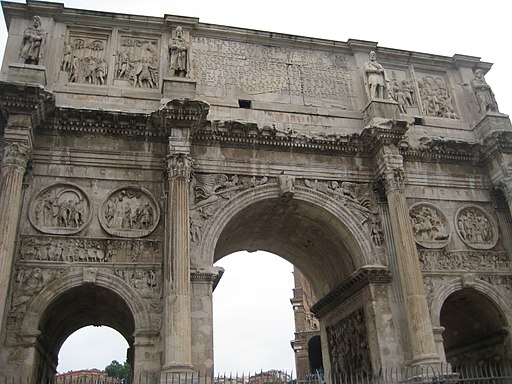Creating Lesson Plans
Download Creating Lesson Plans [word] ![]()
Download Creating Lesson Plans [pdf] ![]()
The best source for creating lesson plans is Art History Teaching Resources (AHTR). It has a wide variety of ideas for the first and second half of the surveys, in addition to thematic lesson plans. Links open in a new tab/window.
Survey 1: Prehistory to Gothic | Art History Teaching Resources
Survey 2: Renaissance to Modern & Contemporary
When building a lesson plan on a new topic, I use the following method:
- For your day’s topic, come up with 1-3 ideas that you want to convey – don’t start with the images that you think you must teach!
- Ex: for a lecture on Early Christian Art it might be that (1) a new way of seeing that was didactic, hieratic emerged and (2) medieval Christians had to deal with the problem of their god being invisible, so they experimented with how to picture him.
- What are some themes conveyed in your text/online reading material? Do you want to reinforce/reject these?
- Ex: Gardener’s uses the Arch of Constantine to express this new way of seeing, a perfect example to show shift from Roman art, but the book suggests that Medievals made their god in the image of the emperor, which you do not believe. You find two images in the text to support your counter-idea (that new images of God were modeled on Roman gods and not the image of the emperor) and one to support the imperial connection.
- What ideas should I review/spring from in my previous lectures?
- The Arch of Constantine may be compared to an earlier roman arch or the Ara Pacis to contrast naturalism
- What idea(s) should I lay the groundwork for in my next lecture?
- -Throughout the Medieval period and beyond, Medievals grapple with whether and how to picture God
- In the Early Christian period, Christianity is one of many religions practiced but later it will dominate giving rise to a major shift in patronage as the church rather than the emperor becomes a major patron, so emphasize imperial works now to shift to church patronized work later
- Select your focal images (details of course are welcome, as are comparisons to other works). NOTE, there are only 5 images here which is plenty for a single class!
- Arch of Constantine – new style; imperial
- St. Peter’s church – new style of architecture; imperially built
- Santa Pudenza Christ – imperially dressed Christ
- Christ as Good Shepherd – new image of Christ
- Anchor/fish painting from catacombs – hidden art/architecture; god symbolized rather than actualized
- How will you teach the concepts you’ve laid out?
- Start with Arch of Constantine and Roman triumphal arch and have students compare, bringing out what is roman about it and what is different.
- Use details of Arch of Constantine to further illuminate what is new
- Introduce St. Peter’s and compare to earlier basilica – ask them to compare
- Show quick comparison of church you will see later such as St. Sernin, based on St. peter’s plan
- Santa Pudenza Christ, have them write down what they think of when they see this image – no leading them – see what they come up with.
- Show Santa Pudenza with Good Shepherd and have them write again
- Open it up for discussion on what was written (perhaps collect what they wrote, you can learn a lot about what they are getting/not getting from reading or lecture this way – you don’t have to grade it, just skim them)
- Introduce another symbolic image of God
- Perhaps introduce the word iconoclasm asking them what it means and show some examples through history of aniconism and varying degrees of iconoclasm
- Start with Arch of Constantine and Roman triumphal arch and have students compare, bringing out what is roman about it and what is different.
- Have a back up comparison/mini discussion in case you whip through this
- but if fleshed out, you will likely barely have enough time for the above!

